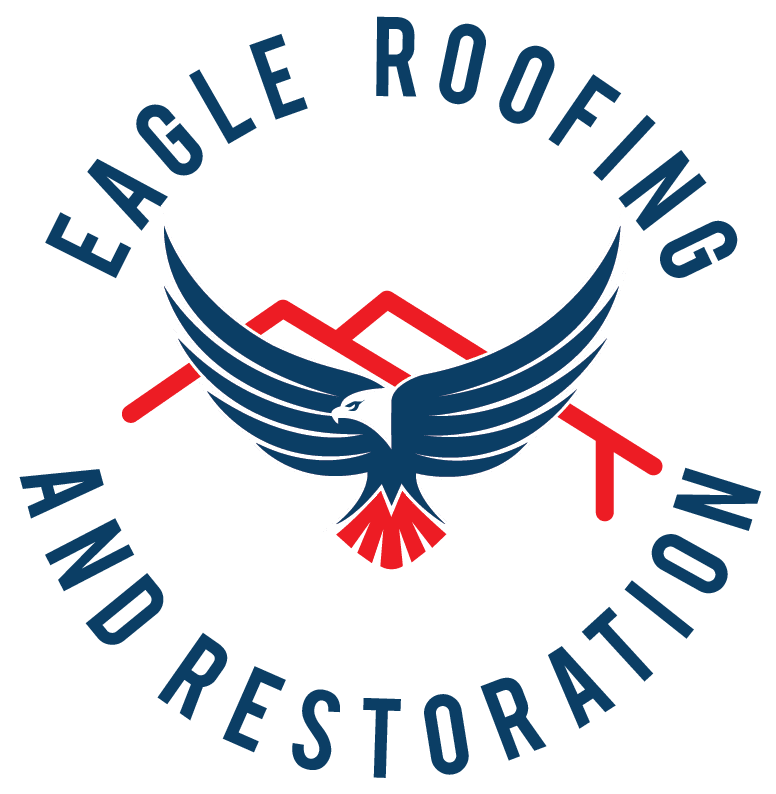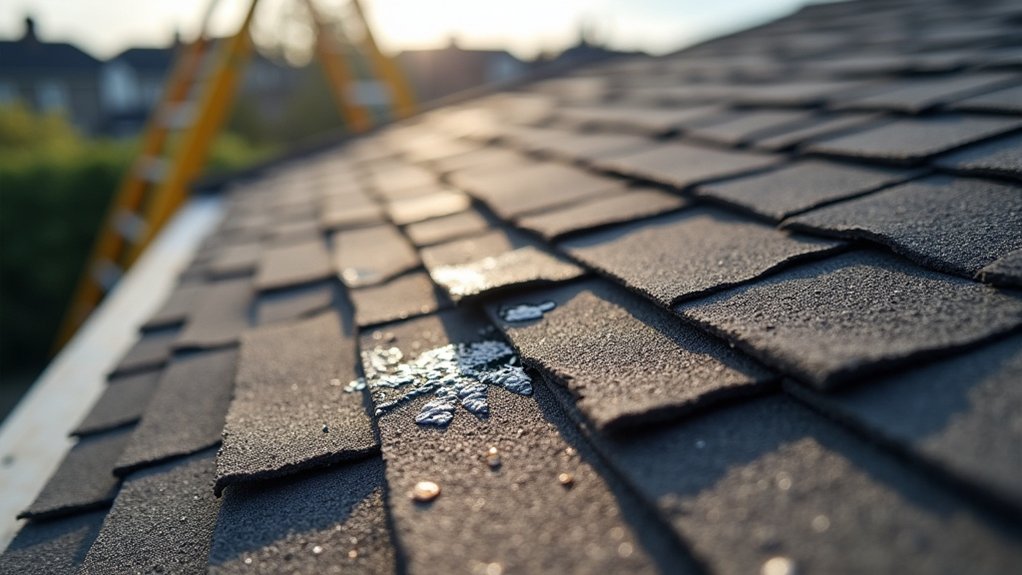Professional roof inspections are essential for protecting your home’s structural integrity and preventing costly water damage. You’ll benefit from expert assessment of critical components like shingles, flashing, ventilation, and support systems that often show subtle signs of deterioration before major problems develop. Regular inspections help extend your roof’s lifespan, provide documentation for insurance claims, and identify necessary repairs early. Understanding the key inspection elements will help you maintain your roof’s protective barrier effectively.
Understanding the Value of Regular Roof Inspections
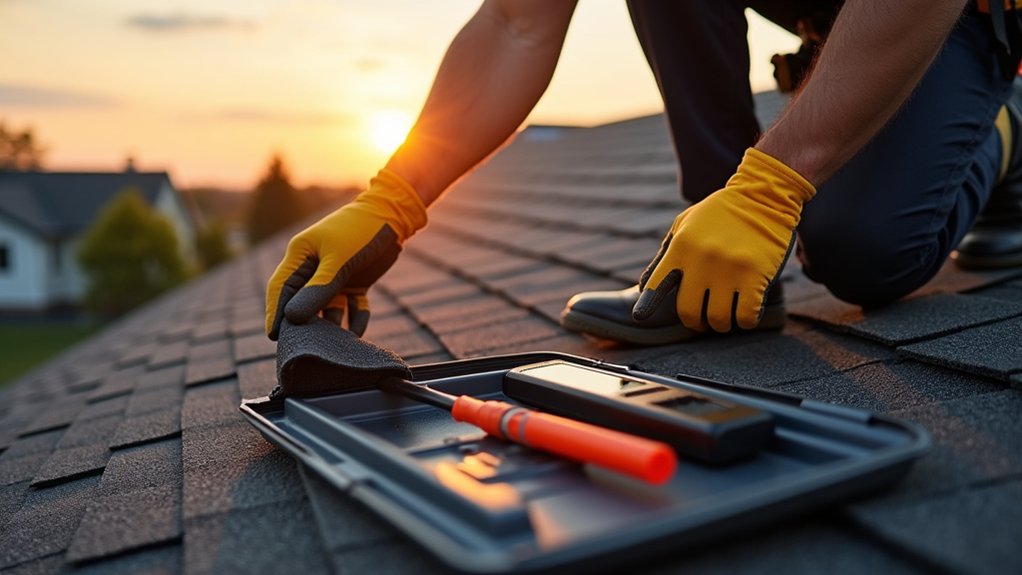
Why do homeowners often overlook their roofs until a serious problem develops? The answer lies in the “out of sight, out of mind” mentality that can lead to costly consequences. Regular roof inspections serve as your first line of defense against structural deterioration and water damage.
A professional roof inspector can identify subtle signs of roof damage that you might miss, from loose shingles to compromised flashing. These preventative maintenance inspections don’t just document your roof condition; they’re vital investments that can extend your roof’s lifespan by years. You’ll benefit from early detection of potential issues, which typically cost far less to repair than emergency fixes or complete replacements. Additionally, documented roof inspections provide valuable records for insurance claims and future home sales, protecting both your property and your investment.
Key Components Examined During Professional Inspections
During your professional roof inspection, experts will thoroughly examine three critical areas that determine your roof’s overall health and longevity. Your inspector will assess the interior framework, including rafters, trusses, and decking, while evaluating ventilation systems and insulation conditions. The thorough/detailed/extensive evaluation continues with detailed analysis of exterior components like shingles, flashing, and gutters, along with a careful examination of material quality and installation workmanship.
Interior Structure Assessment
A thorough interior structure assessment reveals critical insights about your roof’s health that aren’t visible from the outside. During this pivotal phase of the inspection, professional inspectors examine your home’s structural framework and ventilation systems for potential problems.
| Interior Element | What’s Assessed |
|---|---|
| Attic Space | Insulation quality, ventilation efficiency |
| Roof Deck | Water damage, rot, pest infestations |
| Support System | Rafter integrity, structural stability |
Your inspector will carefully evaluate the underside of your roof deck for signs of moisture intrusion, which often indicates larger roofing issues. They’ll also check for proper insulation distribution and ventilation performance, as these factors substantially impact your roof’s longevity. Early detection of structural damage through professional inspection can prevent costly repairs and maintain your roof’s protective function.
Material Quality Examination
Professional roof inspections must extend beyond structural analysis to evaluate the quality and condition of your roofing materials. During this critical examination, inspectors methodically assess each component of your roofing system, from individual shingles to protective flashing and drainage elements.
Your inspector will carefully evaluate the condition of your roof deck and trusses, looking for signs of deterioration or instability that could compromise the entire structure. They’ll employ advanced tools, including infrared technology, to detect hidden moisture issues that aren’t visible to the naked eye. This thorough examination reveals the true state of your roofing materials and identifies potential weak points before they become major problems. The detailed findings you’ll receive outline specific material deficiencies and provide clear recommendations for maintaining your roof’s integrity.
Exterior System Inspection
When inspectors examine your roof’s exterior system, they follow a detailed checklist that covers every critical component. A thorough roof inspection by a professional roofer requires proper safety equipment and specialized tools to assess your roof’s structural integrity. The roof inspector near you will methodically evaluate all exterior elements for signs of damage or deterioration.
- Fascia and soffit examination for water damage, rot, or pest intrusion
- Gutter system assessment, including downspouts, brackets, and drainage patterns
- Flashing inspection around chimneys, vents, skylights, and valleys
- Evaluation of shingle condition, including granule loss, curling, or missing pieces
- Ridge vent and roof penetration examination for potential leak points
These exhaustive checks help identify current issues and prevent future problems, ensuring your roof’s longevity and performance.
Warning Signs Your Roof Needs Immediate Attention
When you spot missing or damaged shingles on your roof’s surface, you’re likely facing a critical maintenance issue that requires prompt professional evaluation. Water stains appearing on your interior ceilings or walls serve as clear indicators of active leaks that can lead to extensive structural damage and mold growth if left unaddressed. A sagging roof area represents one of the most serious warning signs, as it often points to compromised structural integrity that demands immediate expert intervention to prevent potential collapse.
Missing or Damaged Shingles
A deteriorating roof often reveals itself through missing or damaged shingles one of the most visible and serious warning signs that demands immediate attention. When your home’s shingles show signs of wear, you need certified inspections to help assess their condition before extensive damage occurs.
- Missing shingles expose your roof deck to water infiltration, causing interior damage
- Curling and blistering indicate shingles have reached the end of their service life
- Loss of protective granules makes shingles vulnerable to accelerated deterioration
- Fallen or punctured shingles leave underlying roof layers exposed to weather damage
- Compromised shingles considerably reduce your roof’s structural integrity
Don’t wait until water starts dripping into your home. These warning signs mean your roof requires professional evaluation to prevent costly repairs and protect your home’s structural integrity.
Water Stains Inside Home
Interior water stains represent one of the most alarming indicators of roof failure, often manifesting after shingle damage has already occurred. When you notice discolored spots on your ceilings or walls, you’re likely dealing with serious problems with your roof that require immediate attention.
Don’t ignore these telltale signs of roof leaks, as they’ll only lead to more extensive water damage throughout your home. Watch for peeling paint, mold growth, and musty odors these roofing issues signal moisture infiltration that’s compromising your home’s integrity. The longer you wait to address damage to your roof, the more complex and expensive your roof repairs will become. Professional inspection is vital when you spot interior water stains, as they often indicate structural vulnerabilities that aren’t visible from the ground.
Sagging Roof Areas
Sagging roof areas represent critical structural warning signs that demand your immediate attention. When you notice dips, depressions, or waviness in your roof’s surface, it’s pivotal to schedule a professional roof inspection immediately. These issues often indicate severe underlying problems that can compromise your home’s structural integrity.
- Regular roof inspections can detect sagging before it becomes catastrophic
- Water damage and rotting rafters frequently cause roof deck depression
- Professional roofing companies can assess the full extent of structural damage
- Immediate intervention prevents potential problems from escalating into roof collapse
- A thorough roof inspection at least once yearly helps identify early warning signs
Don’t risk your safety by ignoring these critical warning signs. Contact a qualified roofing company to evaluate your sagging roof and determine the necessary repairs to restore your roof’s structural stability.
When to Schedule Your Next Roof Inspection
Professional roof inspections should follow a strategic schedule to guarantee your home’s long-term protection and structural integrity. For ideal peace of mind, you’ll want to look into scheduling an inspection at least once annually, preferably during spring or fall when weather conditions are favorable. Certified Home Inspectors recommend immediate roofing inspection after severe weather events, including hailstorms, high winds, or heavy snowfall.
If you’re planning home renovations or considering selling your property, you’ll need to keep your roof assessment current. Some companies offer a free roof inspection during the home-buying process. Don’t wait more than 10 years between professional assessments, as hidden issues can develop into serious problems. By maintaining a consistent inspection schedule, you’re protecting your investment and preventing costly repairs down the line.
The Cost-Saving Benefits of Professional Inspections
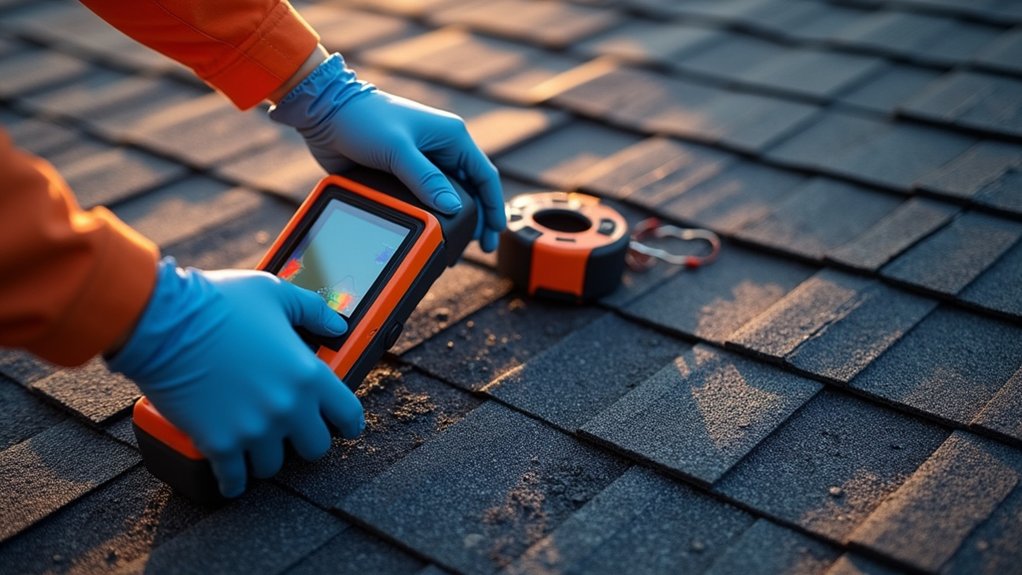
While many homeowners hesitate to spend money on routine roof inspections, investing in expert evaluations can save you thousands of dollars over your roof’s lifetime. To make sure your roof stays in the best possible condition and to protect your home from costly damage, it is crucial to identify problems early through professional assessments.
- HAAG certified roofers know exactly what warning signs to look for during inspections
- Regular evaluations help keep it in good condition and extend your roof’s lifespan
- Early detection prevents minor issues from escalating into major Roof Needs
- Professional documentation simplifies insurance claims when damage occurs
- Addressing small repairs promptly costs considerably less than emergency replacements
Safety Considerations for Roof Maintenance
Beyond the financial benefits of professional inspections, safety stands as a paramount reason to leave roof maintenance to qualified experts. Your roof’s good shape depends on proper inspection, but attempting DIY assessments puts you at serious risk. Roofing professionals possess HAAG certification and specialized training to navigate weather conditions safely while identifying potential issues with roof shingles.
| Safety Factor | DIY Inspection | Professional Inspection |
|---|---|---|
| Equipment | Limited/Basic | Complete Safety Gear |
| Training | None | HAAG-Certified |
| Risk Level | High | Minimal |
| Issue Detection | Limited | Extensive |
| Weather Handling | Dangerous | Properly Equipped |
When you hire a qualified roofing contractor, you’re ensuring the inspection is conducted with proper safety protocols and expertise. They’ll spot problems you might miss while maintaining their own security on your roof.
Common Problems Detected Through Professional Inspections
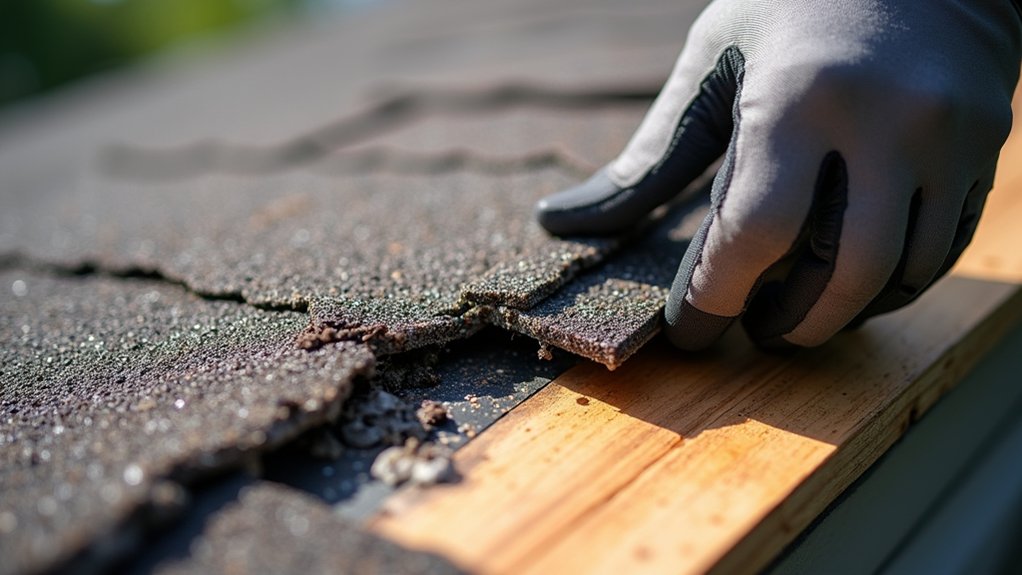
Professional roof inspectors can identify critical issues like missing or damaged shingles that compromise your roof’s protective barrier against the elements. You’ll learn about telltale water damage signs, including dark spots on ceilings, warped decking, or compromised flashing around vents and chimneys. Thorough inspections reveal ventilation system problems that can trap moisture and heat, leading to premature roof deterioration and increased energy costs.
Missing or Damaged Shingles
How often have you noticed dark patches on your roof where shingles should be? Your roof is one of your home’s most critical protective barriers, and missing or damaged shingles can lead to serious structural problems. Professional roof inspectors can identify these issues before they escalate into costly repairs.
- Cracked, curled, or loose shingles indicate significant weathering and potential need for roof replacement
- Dark spots and irregular patterns suggest missing shingles that require immediate attention
- Granule loss and discoloration point to shingles that no longer protect effectively
- Water stains on interior ceilings often trace back to compromised shingles
- Visible daylight through roof boards signals severe shingle damage
Don’t wait for water damage to occur. Contact us today to schedule an inspection with experienced roofing contractors who’ll assess your shingles’ condition and recommend necessary repairs.
Water Damage Signs
When water infiltrates your roof system, it often leaves telltale signs that only trained inspectors can properly diagnose. Watch for discoloration and staining patterns on your ceilings and walls, as these typically indicate active leaks that require immediate attention.
You’ll want to pay close attention to musty odors and visible mold growth in your attic space, as these symptoms suggest ongoing moisture intrusion. If you notice sagging or warped sections of your roof decking, you’re likely dealing with severe water damage that’s compromising your roof’s structural integrity. Professional inspectors will also examine the condition of your roof’s flashing around chimneys and vents, where deterioration commonly occurs. Water stains on the underside of your roof deck serve as clear evidence that your roof system isn’t performing as it should.
Ventilation System Issues
Your home’s ventilation system plays a critical role in maintaining your roof’s longevity and structural integrity. Professional roofing inspections can identify critical problem areas in your attic’s airflow that might be causing damage to your home. The inspection report will list specific ventilation issues that require immediate attention.
- Insufficient airflow through ridge vents and soffits can trap moisture, leading to mold growth
- Improperly installed roof vents disrupt proper air circulation and compromise thermal efficiency
- Blocked ventilation systems allow heat buildup that warps roof trusses and decking
- Poor attic ventilation accelerates shingle deterioration and increases energy costs
- Damaged or misaligned vents create moisture problems that affect your roof’s structural integrity
Don’t wait for visible signs of damage. Regular home inspections can identify these ventilation issues early, preventing costly repairs and extending your roof’s lifespan.
Insurance and Documentation Benefits
Professional roof inspections serve as a vital tool in safeguarding your insurance interests through detailed documentation and expert validation. When you need a roof inspection done, a qualified roofing inspector will provide comprehensive documentation that strengthens your position with your home insurance provider.
The inspection report serves multiple purposes in the insurance claim process. It establishes a clear baseline of your roof’s condition, which becomes essential evidence when weather-related damage occurs. You’ll have professional validation of any existing issues, making it greatly easier to demonstrate the need for repairs or replacement to your insurance company. Insurance providers often require these detailed reports before processing claims, and having one readily available can expedite your claim’s resolution. This documentation helps guarantee you receive appropriate coverage for legitimate roof damage.
Choosing a Qualified Roof Inspector
Having proper documentation for insurance claims holds significant value, but the quality of that documentation depends entirely on selecting the right roof inspector for the job. When choosing a qualified inspector to examine the important parts of your roof at least once a year, you’ll need expert advice from professionals with years of experience to prevent any big problem from developing.
- Look for HAAG certification and membership in the International Association of Certified Home Inspectors
- Verify that your chosen inspector is licensed, bonded, and insured
- Request detailed inspection reports that outline specific findings and recommendations
- Check references and past customer reviews to confirm their expertise
- Choose local roofing companies with established community presence over national chains
What to Expect From Your Inspection Report
A thorough roof inspection report serves as a detailed blueprint of your roof’s condition and future needs. When you hire a roofing professional, you’ll receive extensive documentation that outlines critical findings about your roof’s structural integrity, material condition, and potential vulnerabilities.
Inspectors look for specific indicators during their assessment, including water damage, ventilation efficiency, and insulation performance. The report will detail any existing problems they’ve discovered and highlight areas that may require attention in the near future. You’ll need to know that reputable roofing companies provide clear documentation of average costs for recommended repairs and maintenance. Additionally, your report should include an estimated timeline for your roof’s remaining lifespan, helping you make informed decisions about necessary repairs or potential replacement.
Frequently Asked Questions
Are Roof Inspections Necessary?
Yes, roof inspections are necessary to protect your home’s structural integrity. You’ll need regular evaluations based on your roof age and roof material – typically every year for older roofs or after severe storms. Professional inspections help detect roof leaks, assess roof ventilation, and identify roof damage before it becomes severe. Proper roof maintenance through inspections can extend your roof’s lifespan and prevent costly emergency repairs that could have been avoided.
Who Pays for a Roof Inspection?
As the homeowner, you’re typically responsible for roof inspection payment responsibility and expense liability. However, roof inspection funding sources can vary depending on circumstances. Your insurance policy may cover inspection costs after severe weather events, while mortgage lenders might require and fund inspections. During property transactions, roof inspection cost allocation is often negotiated between buyers and sellers. You’ll find that roof inspection fee arrangements and coverage options depend on your specific situation.
Who Do You Get to Inspect a Roof?
For your roof condition assessment, you’ll want to hire a qualified roofing contractor, certified roof inspector, or specialized home inspector. When scheduling roof inspection requirements, look for professionals with HAAG certification or similar credentials. These experts can provide detailed roofing contractor recommendations and thorough roof maintenance planning. They’ll guide you through the roof certification process and document any issues requiring attention. Always verify their licenses and insurance before hiring.
How Much Does It Cost to Check a Roof?
You’ll typically pay between $75-$200 for a standard professional roof inspection, though costs can vary based on your roof’s size and complexity. If you’re seeking advanced methods, drone inspections range from $150-$400, while infrared scanning costs $400-$600. The inspection process includes a thorough evaluation of your roof’s condition, making it a worthwhile investment. For ideal roof maintenance, you should schedule annual inspections to identify potential issues before they become costly problems.
